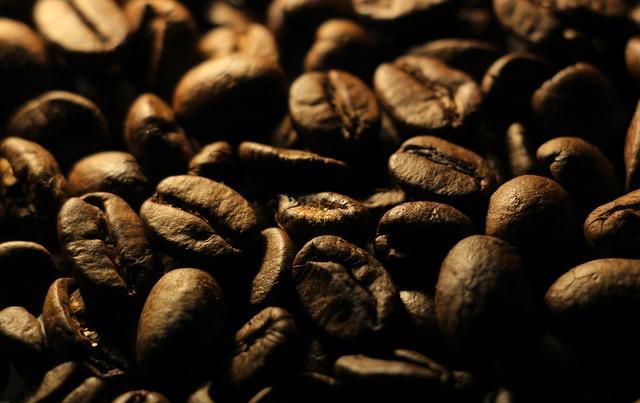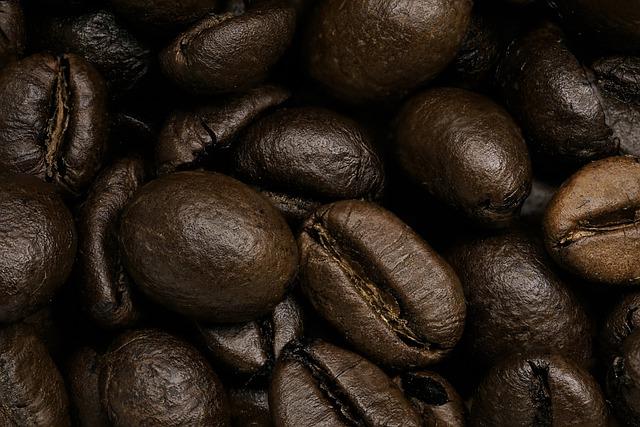Hey there, coffee lovers! ☕️ If you’ve ever found yourself daydreaming about the origins of your morning brew or wondered just what goes into that magical cup of joe, you’re in for a treat! Today, we’re diving deep into the enchanting world of coffee bean plants—the unsung heroes behind our caffeine addiction. From the lush, green landscapes where these beans are cultivated to the intricate processes that transform little cherries into the rich, aromatic fuel we can’t live without, we’ll cover it all. so grab your favorite mug, kick back, and let’s brew some knowledge on the interesting journey of coffee from plant to cup! 🌱✨
The A to Z of Coffee Bean Varieties You Need to Know
When it comes to coffee beans, the world is brimming with fascinating varieties, each offering its own unique flavors and aromas. here are some of the standout types you simply can’t miss:
- Arabica: Known for its smooth, complex flavors, Arabica beans typically have a higher acidity and are grown in higher altitudes.
- Robusta: With a stronger taste and higher caffeine content, Robusta beans are hardy and resistant to pests, making them popular for espressos.
- Liberica: This less common variety has a bold, fruity flavor and is frequently enough found in Southeast Asia.
- Excelsa: A unique member of the liberica family, Excelsa beans are frequently enough described as having a dark, wild flavor profile with fruity undertones.
Now, let’s delve into some intriguing regional distinctions that elevate these beans even more:
| Region | Bean Type | Flavor notes |
|---|---|---|
| South America | Arabica | Fruity, nutty, with mild acidity |
| Africa | Arabica | Floral, citrusy, luminous |
| Asia | Robusta | Earthy, heavy body, low acidity |

How to cultivate Your Own Coffee Plant at Home
Starting your own coffee plant at home can be an exciting adventure, offering you a chance to enjoy the magic of coffee right from your garden or balcony. To begin this aromatic journey, you’ll need to acquire coffee seeds or seedlings. Look for varieties such as Arabica or Robusta—both are popular and can adapt well to container gardening. Make sure you pick a pot with good drainage, fill it with a quality potting mix, and plant your seeds or seedlings about an inch deep. Provide plenty of sunlight; ideally, your plant should recieve around 6-8 hours of bright, indirect sunlight each day. Don’t forget to keep the soil consistently moist but not soggy, as coffee plants enjoy a humid habitat.
As your plant grows, you’ll want to keep an eye on its progress. Regularly check for pests like aphids or spider mites, and maintain a humid atmosphere by misting the leaves occasionally. Ensure you’re using a balanced fertilization system, applying a fertilizer every couple of months to give your plant the nutrients it craves. Here’s a handy guide for caring for your coffee plant:
| Care Aspect | Recommendation |
|---|---|
| Sunlight | 6-8 hours of bright, indirect light |
| watering | Keep soil moist, but avoid overwatering |
| Humidity | Mist leaves to maintain humidity |
| Fertilization | Every 6-8 weeks with balanced fertilizer |

Brewing Secrets: Unlocking the Perfect Cup from Your Beans
Brewing the perfect cup of coffee is a science mixed with a sprinkle of art. To unlock the true potential of your coffee beans, it’s essential to understand the delicate balance of grind size, water temperature, and brewing time.Start with the right grind for your brewing method—coarser for French press, medium for drip, and fine for espresso. Water temperature plays a vital role too; aim for about 195°F to 205°F for optimal extraction. if your coffee tastes bitter, your brew might be too hot, while a sour punch indicates a too-cool soak.Adjust these variables to suit your preferences and watch your coffee game level up!
also, don’t underestimate the impact of freshness! Using whole beans and grinding them just before use can significantly elevate your cup. Store your beans in an airtight container, away from light and heat, to keep those essential oils intact. Take note of the coffee bean variety; single-origin beans offer unique flavors depending on their geographical roots. Here’s a quick look at some popular types:
| Bean Type | Flavor Profile | Best Brewing Method |
|---|---|---|
| Arabica | Smooth, sweet, acidic | Pour-over, French press |
| Robusta | Strong, bitter, earthy | Espresso, stovetop |
| Liberca | Bold, unique | Varies, frequently enough blended |
The Best Gear for Every Coffee Lover on a Budget
If you’re diving into the aromatic world of coffee, you don’t have to break the bank to get the good stuff. Selecting the right gear can transform your coffee brewing experience without draining your wallet. Start with a manual coffee grinder. Not only does it produce a fresher grind, but it also gives you the joy of controlling your grind size. Pair this with a pour-over brewer for maximum flavor extraction. Brands like Hario and Chemex offer affordable options that can elevate your morning cuppa to new heights.
Don’t forget about a reliable scale! Precision is key in coffee brewing, and a good scale ensures you’re using the right coffee-to-water ratio every time. French presses are another budget-kind gem, providing a rich, full-bodied brew that’s hard to beat.invest in a quality insulated thermos to keep your coffee hot while you’re on the go. Check out the table below for a quick comparison of budget options that every coffee lover should consider:
| Item | Average price | Benefits |
|---|---|---|
| Manual Coffee Grinder | $20 – $40 | Fresh grind, adjustable settings |
| Pour-Over Brewer | $30 – $50 | Rich flavor, simple to use |
| Coffee Scale | $10 – $30 | Accurate measurement for perfect brews |
| French Press | $15 – $35 | Full-bodied taste, easy cleanup |
| Insulated Thermos | $20 – $40 | Keeps coffee hot for hours |
Q&A
Q&A: Brewing Magic – The Lowdown on Coffee Bean Plants!
Q1: What exactly is a coffee bean plant?
A: Great question! The coffee bean plant refers to the bush or tree that produces the coffee cherries, which contain the beans we love to brew. It’s scientifically classified under the genus Coffea, and there are several species, with Arabica and Robusta being the most popular. Think of it as the magical source of our beloved morning potion!
Q2: Where do coffee bean plants grow best?
A: Coffee plants thrive in tropical climates, typically found between the Tropics of Cancer and Capricorn. Thay love heights too! Ideal growing conditions are at elevations of 2,000 to 6,000 feet. So, whether it’s in the hills of Colombia or the mountains of Ethiopia, these plants are quite the divas when it comes to their environment!
Q3: How long does it take for a coffee plant to produce beans?
A: Patience is key in the coffee game! Once planted, coffee plants usually take about three to five years to yield their first fruits. After that, they can produce cherries for about 20 to 30 years, so it’s like a long-term investment for your coffee fix!
Q4: what’s the difference between Arabica and Robusta beans?
A: Ah, the classic debate! Arabica beans are known for their smooth, complex flavors and higher acidity. They’re the fancy ones of the coffee world. on the other hand, Robusta beans are bold, stronger, and have a higher caffeine content, making them perfect for those intense espresso shots. If Arabica is the gentle artist, Robusta is the rockstar!
Q5: Do coffee plants have any special care requirements?
A: Absolutely! Coffee plants are a bit high-maintenance. They thrive in well-drained soil, require plenty of sunlight, and need regular watering, but not too much! Think of them as the high-maintenance friend you adore. They also benefit from some companionship, as they can be sensitive to pests and diseases. A little extra love goes a long way!
Q6: Can I grow my own coffee bean plant at home?
A: Sure thing! If you’ve got a warm, light spot (like a sunny window), you can grow your own coffee plant. Just grab some coffea Arabica seeds and follow the planting rules! Just remember—don’t expect a coffee harvest right away; it’ll take some time for those beans to appear!
Q7: How do coffee beans actually get from plant to cup?
A: It’s a journey full of steps! Once harvested, the coffee cherries are processed to extract the beans, which are then dried, roasted, and ground. Each step along the way influences flavor, aroma, and strength. It’s like a makeover for those little beans turning into the liquid gold we sip!
Q8: Any fun facts about coffee plants?
A: Absolutely! Did you know that coffee flower blooms only last for about a day? Yep, it’s a one-day wonder! Also, coffee plants produce white flowers that smell divine—sort of like jasmine! And get this: a single coffee tree can yield up to 4,000 beans per year. That’s a whole lot of magic in one little plant!
Q9: Why should I care about where my coffee comes from?
A: Knowing the source of your coffee beans can deepen your appreciation for that perfect cup. It supports sustainable farming practices and fair trade, ensuring that farmers receive a fair wage.Plus, different regions produce unique flavors, so exploring different plants and their beans is like embarking on a culinary adventure!
Now, go on and brew that cup with newfound appreciation for the little plant that makes your mornings magical! ☕✨
To Conclude
And there you have it, folks! Brewing Magic: The Lowdown on Coffee Bean Plants has taken you on quite the caffeinated adventure, hasn’t it? From the soil to the cup, we’ve unraveled the mysteries of how those tiny beans make their way from lush green leaves to your morning brew.
Whether you’re a coffee connoisseur or just someone looking to kick-start your day, understanding the origins of your favorite cup adds a bit more magic to every sip. So next time you take a moment to enjoy that rich aroma and complex flavor, remember the journey those beans took.
Feeling inspired to try your hand at growing your own coffee? Or maybe you just want to impress your friends at the next brunch? Whatever the case, keep that coffee passion brewing! Be sure to share your thoughts or any questions in the comments below—let’s keep the conversation buzzing. Until next time, happy brewing! ☕✨


